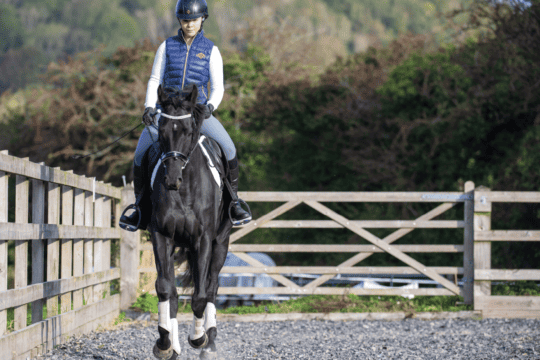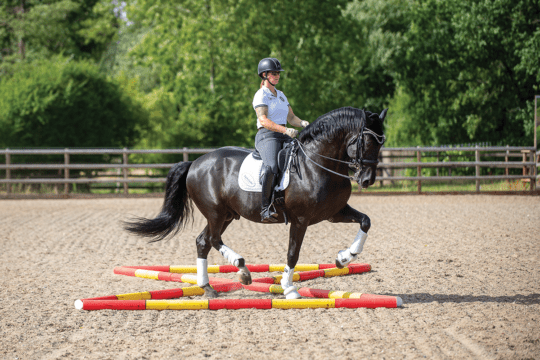Do you struggle with your horse’s quarters falling in? Here’s how to keep them as straight as a die
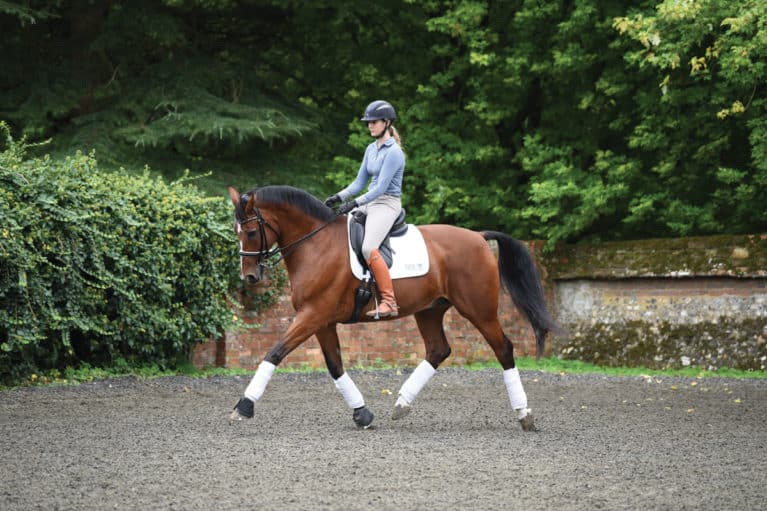
If your horse is prone to being quarters in, you’re not alone – it’s one of the most common schooling gripes. It can make your horse less comfortable to ride and cause you to lose precious marks in a dressage test. This is because he’ll be less supple and flexible through his back, meaning he’ll struggle to properly engage his quarters, and will lack power, making performing lateral movements more difficult. He could be falling in because he’s…
- unfit and isn’t physically strong enough to hold himself
- stiff and lacks suppleness
- feeling unbalanced and is trying to compensate by swinging his hindquarters in
What can you do?
Although it’s tempting to move your inside leg back to push your horse’s quarters towards the track, keeping it on the girth will be more beneficial. Moving your leg back could encourage him to lean against it rather than learning to use himself correctly.
Improving his fitness will help him maintain his balance, improve his flexibility and enable him to fully engage through his back and hindquarters, which should help prevent his quarters falling in. There are lots of quick exercises that you can incorporate into your schooling sessions that will help. Here are a few key ones to get you started…
Top Tip – Remember to work your horse equally on both reins to build up muscle evenly, making it easier for him to stay straight even on his weaker rein.
Exercise 1: Straight and narrow
First, your horse has to tackle going in a straight line without his quarters falling in. To help him, use poles to create a track with a series of corners, like the diagram. Focus on keeping him straight – the aim is to ride through the poles in walk or trot without stepping out of the track. Begin by setting the poles quite wide then, as you start to find it easier, roll them closer together, eventually reducing the width of the track to 1m. As you make the track smaller, the corners become sharper, so make sure you fully prepare your horse to make the turn. Think about your position – don’t be tempted to lean into the corner – and allow with your inside hand for a slight bend, rather than pulling him round. Your outside leg should come back behind the girth to push his quarters round your inside leg.
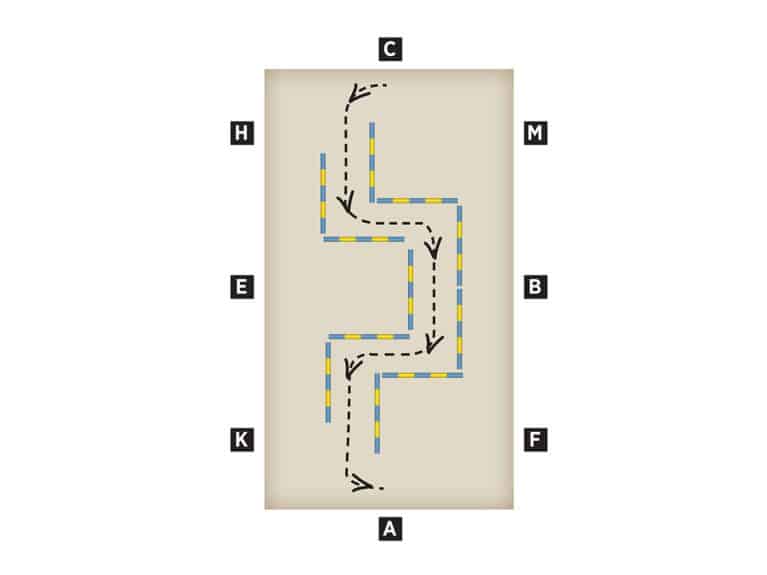
Top tip – If your school has mirrors, set up the track so you’re riding towards them. This means you can use the mirrors to check you’re straight.
Exercise 2: Round we go
While you’re schooling, instead of riding a simple circle, make it a little more difficult by asking for shoulder-fore. To do this turn your shoulders slightly to the inside and ask for inside bend, keep your inside leg firmly on the girth and bring your outside leg back behind the girth. Gradually increase the amount of bend, so you finish the exercise by riding shoulder-in round the circle. Remember, horses are built wider behind than they are in front, so to ensure he’s straight, focus on putting his quarters in the right place before positioning his shoulders. Only after he’s straight should you ask for shoulder-fore. This exercise is great for encouraging him to move and flex through his back, which will enable him to have more control over the position of his quarters.
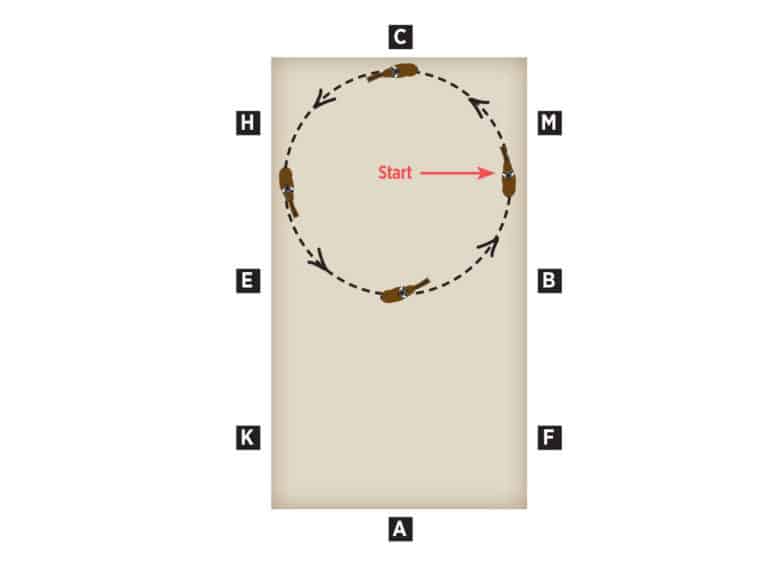
Top tip – A long schooling whip can act as an extension of your leg and help to control your horse’s quarters.
Top tip – Take things slowly and don’t rush, as it will take time for him to build muscle and confidence before you start to see a real difference.
Exercise 3: Think laterally
Lateral movements such as leg-yield can be particularly beneficial to help build muscle, aid balance, and make sure that your horse is working through his back and hindquarters. Working on a 20m circle, ask him to gradually spiral in towards the centre using leg-yield, until the size of the circle has reduced to 10m. Then, spiral back out towards the track, making sure you repeat it on both reins. This exercise is particularly good for building core strength, which will improve his suppleness and flexibility, enabling him to maintain control of his quarters.
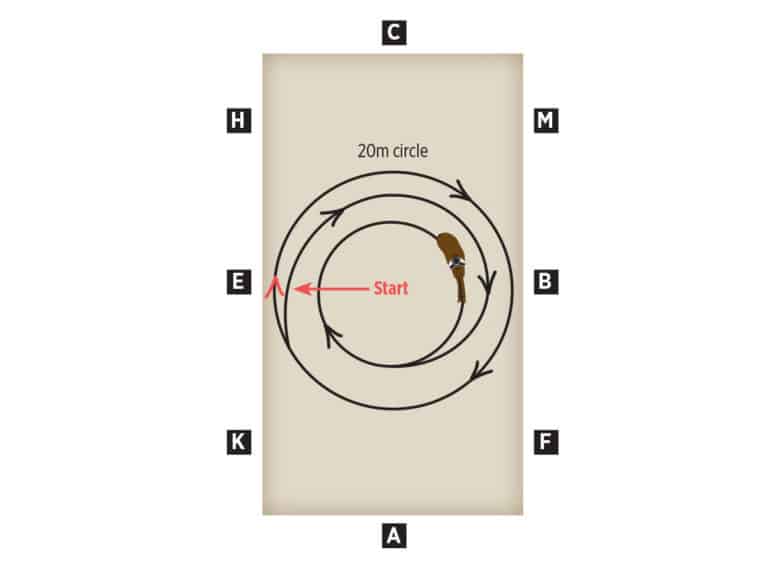
Top tip – Place a block or cone in the centre of the circle to give you a focal point for your spiral.
Get to it
Adding these exercises to your regular schooling sessions will soon help you see an improvement in your horse’s way of going. Remember, little and often will produce better results than trying to fix everything in one session, so take your time and be patient. You’ll be raising those dressage scores in no-time.




